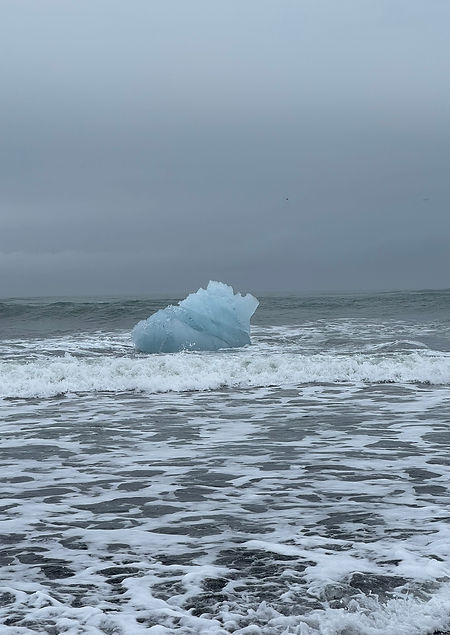
Diamond Beach is a remarkable natural spectacle where the journey of ice from glacier to sea and back creates a constantly changing and dazzling landscape. Huge ice chunks break off from the nearby Breiðamerkurjökull Glacier, drifting slowly through the Jökulsárlón Glacier Lagoon toward the Atlantic Ocean.
Some of these icebergs are small enough to pass under the lagoon’s connecting river bridge and are then carried out by tides and waves. However, the relentless ocean often pushes these sparkling icebergs back onto the shore, where they scatter across the black volcanic sand like glittering diamonds.
This natural cycle of calving, drifting, melting, and washing ashore shapes Diamond Beach’s ethereal beauty, making it a place where visitors witness the glacier’s life story in motion. The interplay of ice, water, and volcanic sand creates striking contrasts and unique ice formations that change daily with tides and weather, ensuring each visit offers a new experience.
Good to know
Scenic beauty
Diamond Beach in Iceland captivates with its striking contrast of sparkling icebergs resting on deep black volcanic sand. The ice, broken off from the nearby glacier lagoon, glistens like diamonds under the sunlight, creating a surreal and ever-changing landscape. This unique blend of icy blue hues and dark sands against the backdrop of the Atlantic Ocean makes it an unforgettable natural wonder.
Accessibility
Located directly off Iceland’s Ring Road, Diamond Beach is easily reached and shares parking with Jökulsárlón Glacier Lagoon.
Cost
Parking fees are 1,126 ISK (approx. 8 EUR / 7 USD).
Crowd level
Diamond Beach is quite popular and can get quite crowded, especially during the busy summer months when Iceland sees the most visitors. Despite this, the beach’s shoreline stretches for several kilometers, providing ample space to explore and find peaceful spots away from the crowds.


